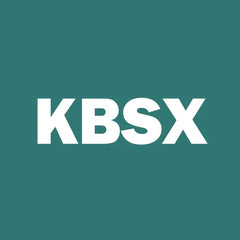
The Essential Guide to Understanding Social Media Reach and Impressions: Maximize Your Marketing Impact
Table of Contents
- Key Highlights:
- Introduction
- What is Reach?
- What are Impressions?
- Why Reach and Impressions Are Complementary Metrics
- Reach and Impressions by Social Media Platform
- Strategies for Maximizing Reach and Impressions
- The Future of Social Media Metrics
Key Highlights:
- Definition of Reach and Impressions: Reach measures the number of unique users who see your content, while impressions count all views, including repeat views from the same user.
- Complementary Metrics: Understanding both metrics is crucial for evaluating the effectiveness of a social media strategy; high reach indicates broad exposure, while impressions signal engagement levels.
- Platform-Specific Insights: Different social media platforms have unique ways of measuring reach and impressions, impacting how businesses interpret their performance across channels.
Introduction
In a world where digital presence can dictate business success, understanding social media metrics is no longer optional. Social media platforms are more than just channels for communication; they are powerful tools for marketing and brand awareness. For businesses, measuring the effectiveness of their social media efforts hinges largely on two critical metrics: reach and impressions. These terms are often used interchangeably, but they serve distinct purposes in tracking performance and shaping future marketing strategies. This article delves into the nuances of reach and impressions, their importance, and how businesses can leverage them to enhance their social media marketing strategies effectively.
What is Reach?
Reach is a fundamental social media metric that indicates the number of unique users who are exposed to a piece of content. It counts each viewer only once, regardless of how many times they have seen that content. This metric can provide valuable insights into the size of your audience and potential engagement opportunities. A higher reach implies that more individuals have encountered your brand, increasing the likelihood of interaction.
While a robust follower count can enhance reach, it is not the sole determinant. Social media algorithms play a significant role in content visibility. For example, a follower may not see a brand's post if the algorithm deems it less relevant, while a new user might discover the content through shares or suggestions.
Example of Reach in Practice
Consider a small crochet business that shares a vibrant photo of its latest crochet coaster set on Instagram. If this post reaches 100,000 users across feeds, hashtag searches, and the Explore page, that figure represents its reach. Even if some users view the image multiple times, the count remains at 100,000 for reach. This metric is pivotal for assessing how effectively a brand can capture attention in a crowded digital marketplace.
What are Impressions?
Impressions offer a different perspective, quantifying the total number of times content appears on users’ screens. Unlike reach, which focuses on unique views, impressions account for all instances of viewing, including repeated views by the same individual. Consequently, impressions will always equal or surpass reach.
Understanding Impressions through Example
Continuing with the crochet business example, if the same Instagram post garnered a total of 125,000 impressions, this figure reflects the cumulative views across all users. Some viewers may have seen the image multiple times, whether through scrolling or visiting the business profile. Each view counts toward the total impressions, offering insights into how engaging and visible the content is within social media feeds.
Impressions are particularly useful for gauging brand awareness among target audiences. A user who views a post multiple times might be in the consideration phase of making a purchase or simply be inspired by the content. Thus, impressions can reveal the depth of interaction with posts.
Why Reach and Impressions Are Complementary Metrics
Understanding reach and impressions together provides a comprehensive view of social media performance. High reach figures can indicate a broad audience exposure, but they do not necessarily convey whether that audience is actively engaging with the content. Conversely, high impressions might indicate strong engagement, but if concentrated among a small group, they may not translate to wider brand recognition.
An effective social media strategy should leverage both metrics. For instance, if a brand has high reach but low engagement, it may need to refine its content strategy to resonate more with its audience. Alternatively, if impressions are high but reach is low, it may suggest that the content is appealing to a dedicated fanbase, but additional outreach strategies are needed to attract new followers.
Reach and Impressions by Social Media Platform
Different social media platforms have distinct methods for measuring reach and impressions, influenced by varying algorithms, content types, and user behaviors. Understanding these differences is crucial for businesses aiming to optimize their social media strategies across multiple channels.
Facebook distinguishes between paid and organic reach.
- Paid Reach: The number of unique users who see a paid post.
- Organic Reach: The estimated number of people who see unpaid posts.
Facebook further categorizes organic reach into viral and nonviral. Viral reach occurs when users see content shared by their friends, whereas nonviral reach happens when posts appear in users' news feeds without social sharing.
Impressions on Facebook represent the total number of times any content—whether paid or organic—appears on a user’s screen. This dual approach allows marketers to assess the effectiveness of both paid and organic strategies.
Being under the same umbrella as Facebook, Instagram shares similar definitions for reach and impressions, although terminology varies. Reach is tracked as "accounts reached," indicating the unique accounts that view a post. Impressions are referred to as "views," capturing the total instances of content appearance.
Instagram Insights provides valuable analytics for business accounts, allowing users to track reach and engagement metrics, including profile activity and interaction rates.
TikTok
On TikTok, reach measures the total number of unique users who view a specific video. While TikTok does not use the term impressions for organic content, it tracks "views" to reflect total watches of a video. For paid content, impressions are quantified similarly to other platforms.
TikTok's focus on video content means that businesses need to engage users quickly and effectively to maximize reach and impressions, as viral trends can significantly elevate both metrics.
Pinterest does not measure reach for accounts or individual pins but allows users to track the total audience engaged with their pins. Impressions track how often pins or ads appear on users' screens, making it essential for brands using Pinterest for visual marketing strategies.
X (formerly Twitter)
On X, users with Premium accounts can access detailed metrics. Impressions denote the number of times posts appear in feeds or timelines, while reach is less explicitly defined. As engagement is central to X's model, understanding impressions can help brands assess the resonance of their tweets.
Strategies for Maximizing Reach and Impressions
To effectively leverage reach and impressions for marketing success, businesses should consider implementing various strategies tailored to their target audiences and platform strengths.
Content Quality and Relevance
Creating high-quality, engaging content is paramount. Posts that resonate emotionally or offer value tend to encourage sharing, increasing both reach and impressions. Utilizing relevant hashtags, trends, and user-generated content can further amplify visibility.
Consistent Posting Schedule
Maintaining a consistent posting schedule keeps your brand top-of-mind for followers. Regular updates can help improve organic reach as algorithms favor accounts that are active and engaged.
Utilize Paid Advertising
Investing in paid social media advertising can provide a significant boost to both reach and impressions. Targeted ads can introduce your brand to new audiences, enhancing reach while simultaneously increasing the number of impressions through repeated viewing.
Engage with Your Audience
Encouraging interaction through comments, shares, and likes can enhance the organic reach of your posts. Engaging with followers and responding to comments can foster a sense of community, prompting users to interact with your content more frequently.
The Future of Social Media Metrics
As social media continues to evolve, so too will the methods for measuring success. Businesses will need to stay attuned to emerging trends and changes in algorithms that affect how reach and impressions are calculated. Additionally, incorporating advanced analytics and machine learning can provide deeper insights into user behavior and engagement patterns.
The Role of AI and Analytics
With advancements in artificial intelligence, brands can expect more sophisticated tools for analyzing social media metrics. Predictive analytics could enable companies to forecast engagement trends and tailor content accordingly, optimizing both reach and impressions.
User Privacy and Algorithm Changes
As users become more privacy-conscious, social media platforms are adapting their algorithms and data collection methods. Businesses must navigate these changes thoughtfully, ensuring compliance while still effectively measuring their social media performance.
FAQ
What is the difference between reach and impressions?
Reach measures the number of unique users who see your content, while impressions count all views, including repeat views by the same user.
How can I improve my social media reach?
To enhance your reach, focus on creating high-quality content that resonates with your audience, utilize relevant hashtags, maintain a consistent posting schedule, and engage actively with your followers.
Why are both metrics important?
Both reach and impressions provide insights into social media performance. High reach indicates broad exposure, while impressions reflect user engagement levels, helping businesses refine their marketing strategies.
Do all social media platforms measure reach and impressions the same way?
No, different platforms have unique methods for measuring these metrics. While the core definitions remain similar, specific tracking methods can vary based on the platform's algorithms and user interactions.
How can I track reach and impressions on my social media accounts?
Most social media platforms offer analytics tools that allow you to monitor reach and impressions. For example, Facebook Insights, Instagram Insights, and TikTok Analytics provide detailed metrics on user engagement.
What strategies can boost my impressions?
To increase impressions, consider utilizing paid advertising, posting engaging content regularly, encouraging user interaction, and leveraging trending topics or hashtags to attract more views.
By understanding and effectively leveraging reach and impressions, businesses can enhance their social media strategies, leading to greater brand awareness and increased customer engagement.
Povećajte svoju e-trgovinu s našim nedeljnim uvidima i ažuriranjima!
Ostanite u skladu sa onim što se dešava u svijetu trgovine
Adresa e-pošte
Odabrano za Vas

31 July 2025 / Blog
The Rise of Personalized Pricing: How AI is Transforming Consumer Costs
Pročitajte više
31 July 2025 / Blog
FST Corp. Revolutionizes Golf Equipment Sales with Shopify Plus Integration
Pročitajte više
31 July 2025 / Blog


